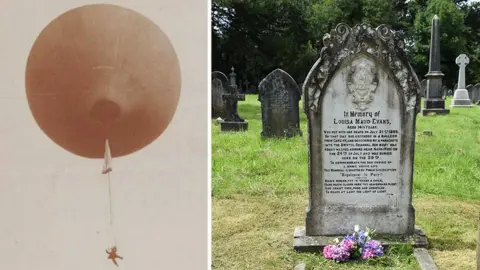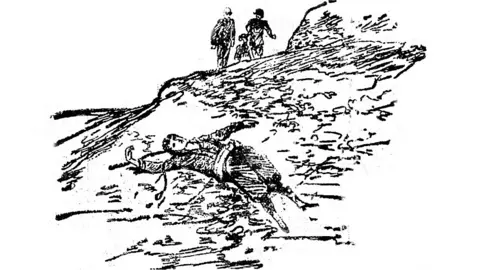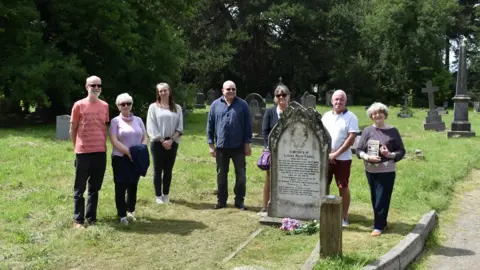Girl's tragic balloon accident death marked 125 years on
 Western Mail archive
Western Mail archive It was meant to be an event to rival Crystal Palace's 1851 Great Exhibition.
In the summer of 1896, Cardiff launched the "Fine Arts, Industrial and Maritime Exhibition".
Despite having a 9,000-seater concert hall venue, an overhead railway and 800 specially commissioned exhibits, the six-month festival made headlines for the wrong reason - the death of a 14-year-old girl.
It's 125 years since Louisa Maud Evans fell into the Bristol Channel when an aeronautic display went horribly wrong.
Rosemary Chaloner, author of The Balloon Girl, is part of a group who mark the anniversary of her death each year.
She said: "These weren't hot air balloons with a basket as you might imagine seeing today, they were balloons with a trapeze bar and wooden seat attached beneath. A parachute was fixed to the balloon with a thin cord.
"They would fly between 5,000 and 8,000ft before jumping, trusting the parachute would detach from the balloon and open before they landed.
"Thousands of spectators had gathered in the exhibition's velodrome to see Louisa perform with world-famous French aeronaut, Auguste Eugene Gaudron, when the wind suddenly changed, and she was blown away from Cardiff and over the sea."
 Western Mail archive/Rosemary Chaloner
Western Mail archive/Rosemary Chaloner Onlookers watched in horror as it soon became obvious Louisa's balloon was out of control and something terrible was unfolding.
It took three days to discover Louisa's body, when it was washed up at Nash, near Newport.
Her inquest concluded she'd had no training and no safety measures had been put in place to mitigate the risks to her.
 Western Mail archive
Western Mail archive The jury heard Bristol-born Louisa, who had been given away at birth, was lured by newspaper reports of the exhibition and had travelled to Cardiff in search of fame and fortune.
"Gaudron had previously performed with another female co-star, however, she had retired shortly before the exhibition," said Rosemary.
"Louisa offered to stand in, saying she was an experienced balloonist when in fact she'd never been in the air before.
"When pressed under cross-examination, Gaudron admitted that he had no proof of Louisa's claims, he had never rehearsed with her or even seen her fly, and that he hadn't intended to use Louisa in his performance until a similar festival in Glasgow some months later."
Her death changed the law, with parliament amending the act concerning the age of children able to take place in "dangerous pursuits".
The incident adversely affected Cardiff council's ambition to put coal, iron and copper-rich south Wales on the international map.
Three years in the planning and costing hundreds of thousands of pounds, the exhibition's grounds extended from Park Place to North Road, and from College Road to the Friary - with Greyfriars Road and the Civic centre not being built until 1904.
 Rosemary Chaloner
Rosemary ChalonerRosemary became fascinated by Louisa's story while working as a museum facilitator in the city.
"I'd vaguely heard about the exhibition, but it wasn't until I was reading through a book titled Glamorgan Aviation by Robert C Thursby, held in The Museum of Cardiff's reference library, that I discovered Louisa's tale and the effect it had on the entire event.
"For something which had such a profound impact, it's sad that a century and more on so few people know her name."
Louisa was buried in Cathays Cemetery on 29 July 1896.
Rosemary is part of a group aiming to keep her memory alive, including by holding a vigil at her graveside on the anniversary of her death.
